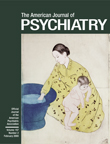This is a very interesting book, especially for readers working with geriatric patients. The book was conceived in 1995 following a symposium at the annual meeting of the American Psychological Association. The book is organized into four parts: Conceptual Background, Research and Assessment: Overview and Outcome Measures (a literature review), Clinical Issues: Diagnosis and Treatment, and Systems and Social Issues (which deals with ethical concerns). Chapters were written from three perspectives: personality disorders, gerontological psychology and psychiatry, and the writer’s own perspective. The resulting chapters are interesting and well written and represent a significant beginning into the study of personality disorders in older adults.
Personality disorders are chronic maladaptive behaviors that are reflected in interpersonal difficulties, affective instability, and unexpected responses to clinical treatment. Patients with personality disorders are often described in shorthand as “difficult.” Although there has been very little research about personality disorders in the geriatric population, it was thought that these disorders “age out,” having little impact on the elder’s (or their family’s) lives. This strikes me as naïve, perhaps reflecting an idealized view of grandparents. Certainly, most of us know an unpleasant and difficult grandparent who has a personality disorder.
The central concept to personality disorder is time: personality continues across time with some consistency; personality disorders are continuous, rigid, and problem causing. The DSM-IV description of the 10 personality disorders has problems with differentiation, construct validity, and stability. In chapter 1 of Personality Disorders in Older Adults, there is discussion of the problem with data collection without a general theoretical conceptualization of this subject. There are good discussions in chapters 6, 7, and 8 of possible dimensional measures to develop a reliable personality disorder construct.
The research on personality disorders in late life is sparse. This book provides a meta-analysis review of the literature. Contrary to the notion that personality disorders attenuate, the review indicates that the overall prevalence for the 50-plus-year-old age group is 20%, compared with 22% for the under-50-year-old age group. The most frequent personality disorders in the older group were paranoid, schizoid, and self-defeating disorders. More interesting yet is that the authors believe DSM guidelines discourage clinicians from making this diagnosis. This seems right. How many thousands of charts have we all seen without an axis II diagnosis? Rather than a negative age effect on the rate of personality disorders in the elderly, it may be that there is a slightly higher rate resulting from the significant and difficult adjustments required of the older patient, who, because of latent or mild maladaptive personality traits, is less able to change and adjust effectively. It appears that older individuals with personality disorders are more vulnerable to major depression, likely reflecting their increasingly poor adaptation. From my own work in nursing homes, the 20% rate seems generally right, although a much higher rate of 60% and higher in some facilities with large psychiatric populations is not uncommon.
One of the more frequent treatment concerns, and a resulting ethical issue, is that the patient with a personality disorder is provocative and aggravating to others. Management of these patients requires special attunement to countertransference problems and maintenance of kind and tactful ethical behavior on the part of the clinician.
There is an interesting and helpful chapter on pharmacological treatment. Medication can be helpful in ameliorating some of the more difficult symptoms, but medication does not cure the personality disorder.
This is a first book on the subject of personality disorders in older adults. I recommend it.

